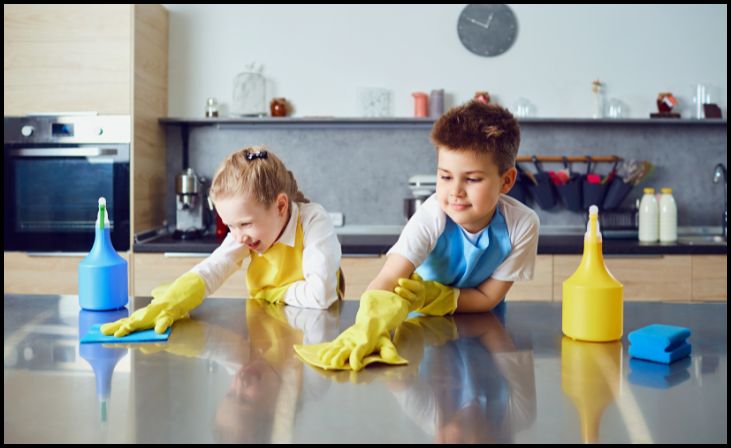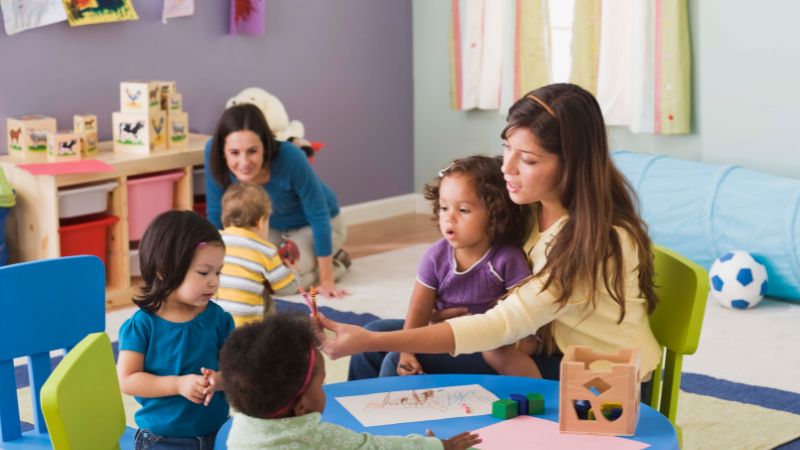Ever wonder how daycare teachers manage to keep a classroom full of energetic kids organized and happy? It’s no small feat, and they’ve got some clever tricks up their sleeves. Whether you’re a parent, caregiver, or educator, these insider secrets can make your life a lot easier. Let’s dive into the nine secrets of daycare teachers and how you can apply them at home or in your classroom.
1. Transitions: Simplify Your Routine
Transitions can be a nightmare for kids. According to Maigualida Osorio, the supervisor of Small Fry Preschool in Ancaster, Ontario, “the art of preschool is the art of repetition.” Simplifying transitions and making them predictable helps kids know what to expect. Use consistent cues and keep the routine the same every day. This reduces anxiety and helps children move smoothly from one activity to the next.
2. Capture Your Routine in Pictures

Donna Freeman, director of the Discovery Children’s Centre in Winnipeg, uses charts and illustrations to help daycare children visualize their daily routines. You can do the same at home. Create a picture schedule that shows each part of the day, from breakfast to bedtime. This visual aid helps kids understand what comes next and can reduce resistance to transitions.
3. Give Warnings
Nobody likes being interrupted, especially kids who lack the maturity to handle sudden changes. Give children a heads-up before transitioning to a new activity. For example, “In five minutes, we will clean up and get ready for lunch.” This warning helps them mentally prepare for the change.
4. Create the Illusion of Choice
A lack of control can make children fussy during transitions. Ashley Imrie, an ECE from Edmonton’s Glenora Child Care Society, suggests providing a “fake choice.” For instance, ask, “Do you want to put away your blocks first or your cars?” Both options lead to the same outcome but give the child a sense of control.
5. Make Transitions Fun
Meike VanGerwen, an early childhood educator at the University of Toronto Early Learning Centre, helps her students visualize future activities positively to ease transitions. Turn the transition into a game or a fun activity. Sing a song, use a silly voice, or incorporate a playful element to make the process enjoyable.
6. Feeding: Eat Together

Kids often eat better when they see their peers eating. This is one of the reasons why family meals at home should be prioritized. Sit down and eat together as a family. Model healthy eating habits and make mealtime a social, enjoyable experience.
7. Stop Offering Backup Meals
At daycare, the only options are the meal or snack served, with the possible exception of fruit and milk. If kids don’t like what’s offered, they can wait until the next meal. This approach reduces picky eating habits. At home, avoid making separate meals for each family member. Serve one meal and stick to it.
8. Make Cleaning Fun

Preschoolers and toddlers have vivid imaginations. VanGerwen suggests using this to your advantage. Turn cleaning into a game. Tell kids, “Your toys want to go home to their bins,” or “Your shoes want to stay together while you’re not there, so place them beside each other.” This makes tidying up a fun activity rather than a chore.
9. Be Specific with Requests
A two-year-old won’t understand what “clean up” means. VanGerwen makes specific requests in her classroom, like “Please put the blocks back in the box.” Being specific helps children understand exactly what is expected of them and makes them more likely to comply.




